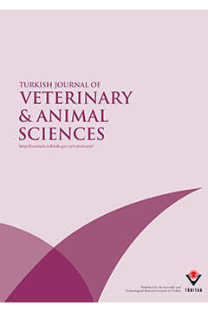The Effect of Initial Live Weight on Technical and Economic Performance in Cattle Fattening
This research was carried out to assess cattle fattening activity between October 1999 and March 2000 in terms of its technical and economic aspects. The data of 138 days' fattening in 54 male Brown Swiss hybrid (F1) cattle of about 20-22 months old form the material of the research. The cattle whose initial live-weights were up to 200 kg were defined as Group I, those between 201 and 250 kg as Group II and those over 251 kg as Group III. The lowest value in the average live-weight costs per unit was found in Group I. The partial productivity of feed in terms of dry matter content was 0.15 kg. The partial productivity of labor was 37.20 kg/d. The financial profitability ratio was 37.34%. The price margin of the whole herd was 18.71% and the weight margin was 81.29%. In conclusion, it was determined that the animals with low initial live-weights had a higher fattening performance in terms of economic values and technical evaluation criteria, with the exception of daily live-weight gain per animal.
The Effect of Initial Live Weight on Technical and Economic Performance in Cattle Fattening
This research was carried out to assess cattle fattening activity between October 1999 and March 2000 in terms of its technical and economic aspects. The data of 138 days' fattening in 54 male Brown Swiss hybrid (F1) cattle of about 20-22 months old form the material of the research. The cattle whose initial live-weights were up to 200 kg were defined as Group I, those between 201 and 250 kg as Group II and those over 251 kg as Group III. The lowest value in the average live-weight costs per unit was found in Group I. The partial productivity of feed in terms of dry matter content was 0.15 kg. The partial productivity of labor was 37.20 kg/d. The financial profitability ratio was 37.34%. The price margin of the whole herd was 18.71% and the weight margin was 81.29%. In conclusion, it was determined that the animals with low initial live-weights had a higher fattening performance in terms of economic values and technical evaluation criteria, with the exception of daily live-weight gain per animal.
